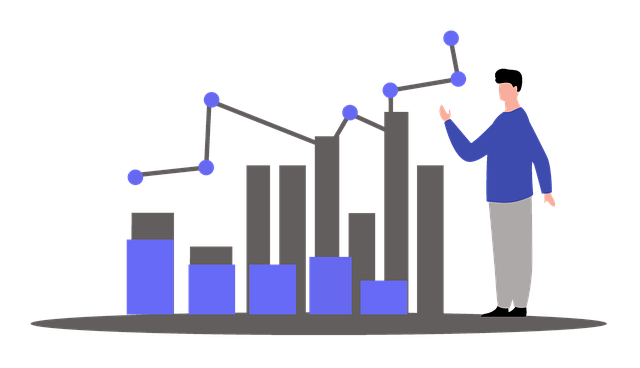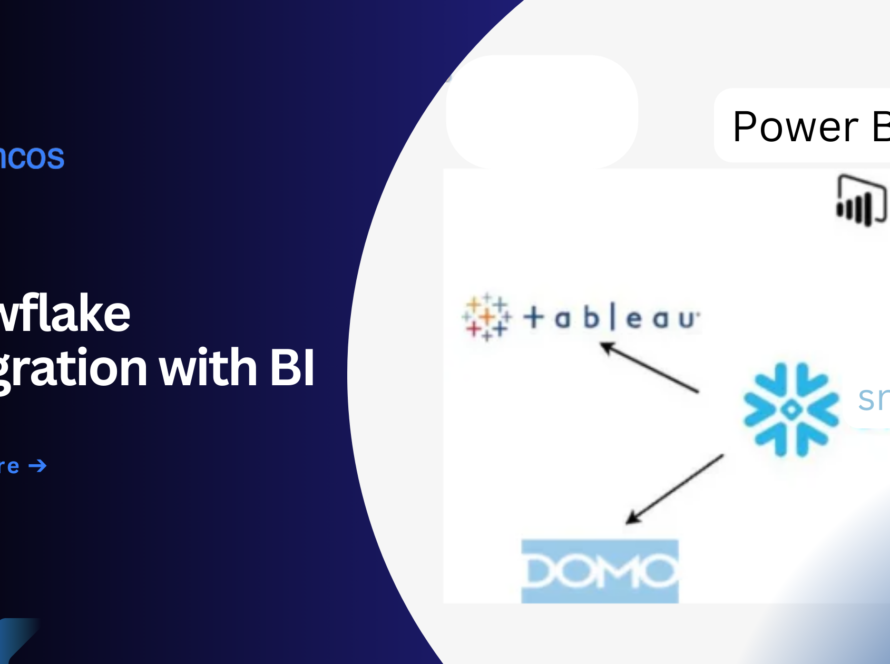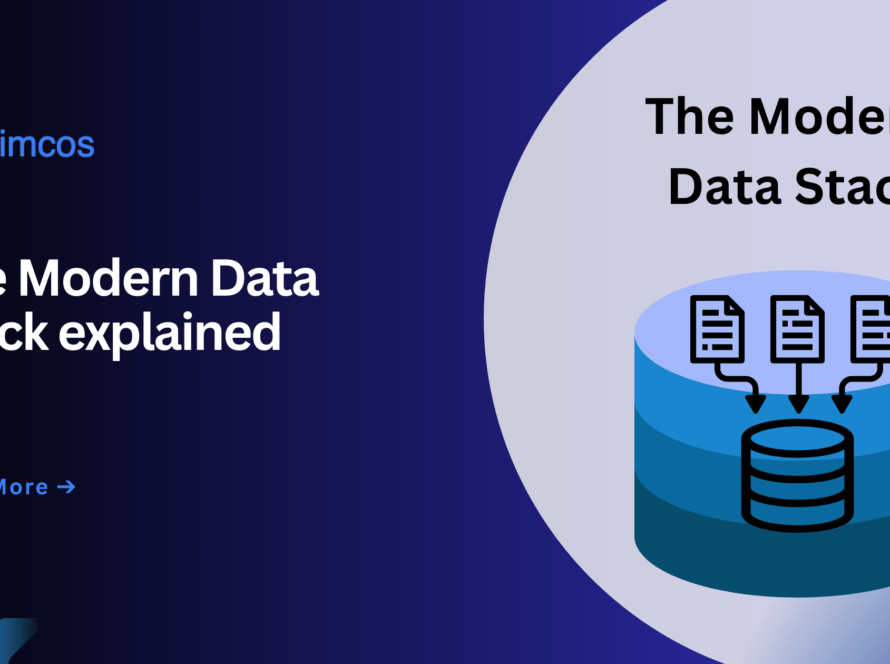Businesses have been drowning in an ocean of information. Understanding Big Data Analytics with Snowflake is much needed because Big Data consists of both organized and unorganized formats. The struggle to analyze Big Data has generated a new wave of applications designed for businesses of all sizes. These help companies decipher complex data sets incoming from diverse sources, turning them from chaos into clarity.
Software applications have undergone a similar transformation, evolving from simple, standalone solutions to powerful, web-based platforms. Snowflake, a cloud-based data warehousing platform, is a shining example of this shift and is gaining traction worldwide. For businesses experiencing growth, analyzing data with Snowflake offers a valuable benefit: scalability to handle ever-increasing data volumes.
Table of Contents
What is Snowflake?
Snowflake is a cloud-based data platform specifically designed for warehousing and analyzing information. It allows businesses to store and manage vast amounts of data, both structured (like sales figures) and unstructured (like website clicks). Snowflake then provides tools to analyze this data, helping businesses uncover trends and patterns. This empowers them to make data-driven decisions for better outcomes.

What is Data Analytics?
Data analytics is the process of examining large sets of information to find meaningful patterns and trends. It involves collecting data, cleaning it and then using various techniques to analyze it. The goal is to transform raw data into actionable insights that businesses could use to improve decision-making.
Why is it Important?
Snowflake Data Analytics helps in finding tons of data through which businesses take correct decisions. Following are the points that will help understand in what ways it is important.
a) Uncover Hidden Trends
Businesses go through volumes of data each day. Data analytics brings out those patterns and trends within that data that is not obvious. For instance, sales data analysis show that a particular product sells better when bundled with another product or customers from a specific region show purchasing habit variations.
b) Improve Decision-Making
These trends, when unearthed, help business persons make decisions. It helps them realize which of their products is enjoying higher demand or which of their marketing strategies best appeals to the customers and thus distributes their resources and accordingly develops their optimization strategy.
c) Product Innovation
Data analytics exposes pain points and unmet needs of customers. To that end, companies analyze product reviews, social media sentiment and customer support queries to determine areas for improvement or even completely new product ideas.
d) Risk Management
Analysis of historic data highlights the potential risks on which the business has to focus by developing proactive strategies to mitigate them. For example, analysis of the sales trend helps predict future stock outs and analytics of customer behaviour helps identify fraud in advance for any remedial actions.

How does Snowflake help with Data Analytics?
Businesses use Snowflake to store all their data, structured or unstructured, in one secure location. This centralized repository of data links all their different data analytics tools directly into Snowflake. They therefore, analyze large volumes of information with ease. Data analytics with Snowflake simply equates to speedier insight access, thus helping businesses arrive at data-driven decisions.
Following points show how Snowflake helps businesses to get the most out of their data:
• Cloud-Based Architecture
Traditional data warehouses demand physical servers and software licenses that are expensive in maintaining and inflexible when the data volume fluctuates. Snowflake operates entirely in the cloud, so there is no upfront hardware investment required with ongoing IT management. This means cost-efficiency and scalability, with business customers paying only for storage and compute resources used in reality. Due to its cloud nature, Snowflake scaling up or down is painless: if the volume of data grows, Snowflake scales up its resources to digest it without a loss in performance for data analysis tasks.
• Unified Data Platform
For many businesses, it is a point of pain when information is scattered across different systems in various formats. As a result, it is not easy to get a whole overview of the data and hence hinders comprehensive analysis. Snowflake handles both structured data, such as sales figures and customer information and unstructured data, which includes social media posts, website clickstreams and sensor data. This, therefore, eliminates the need for separate data storage solutions and businesses consolidate all the data in one place. With a unified data platform, businesses perform more in-depth and insightful data analysis, connecting the bridges between various insights that might have been missed earlier.
• Secure Data Storage
It remains a major concern for businesses dealing in sensitive data, such as customer information or even financial records. Snowflake has placed much emphasis on data security by including role-based access control in its architecture. That way, only the right users will be privy to specific data sets to avoid any unauthorized access or breach of data. Snowflake encrypts data in rest and transit.
By offering these functionalities to organizations, Snowflake elevates them beyond the mundane problems that beset their analytics. It takes away the technical pain points of data storage scalability and security so they get down to doing what they really must do–that is, extract meaningful insight from data to make better, data-driven decisions and take the lead over competition eventually.

5 Reasons why Data Analytics with Snowflake Stands Out
1. Built for Big Data
Snowflake has been built from the very beginning for massive data volume. Complex data analysis requirements are therefore adequately matched by its data warehousing capacity. It also allows for easy tenant servers; connecting seamlessly to Big Data on AWS, Azure, or GCP and accelerating data loading processes.
2. Flexible Data Loading
Snowflake is more than just an SQL database. It works fine with ODBC and JDBC databases, web application servers, general files and even on-premise services. Another strong point is Snowpipe, enabling this tool to ingest data in real time into Snowflake tables. Snowpipe automatically detects new files that have arrived in cloud storage and starts loading them into Snowflake tables with no user intervention required. It then processes the incoming volume of data so that the information is always up to date. It offers multiple file formats supported: CSV, JSON, Avro and provides data transformation abilities via SQL or JavaScript.
3. Integrates with many tools
Besides cloud services, Snowflake also supports a big array of data analytics software. It allows integration with various data management/automation tools-Talend, Fivetran-for smoothly importing data and BI- Power BI and Tableau-for data visualization, data exploration and reporting without transferring data across systems so that all of your data analysis lives in one place.
4. Database Cloning
Cloning in Snowflake allows a database administrator to copy their databases within Snowflake with just a few clicks. It provides a new, independent copy of the selected database that has all of its own metadata and storage resources. Based on this, there are several uses, including multiple copies of your data for testing, development and training. Snowflake has “zero-copy” technology; Snowflake copies environments without the actual copying of data itself, but it does copy metadata, saving pointers to the original data. Everything from a single table to an entire database is cloned optionally to clone data, metadata, or both.
5. Time Travel for Data Recovery
Snowflake’s feature, Time Travel, makes it easy for users to browse through the history of data. Recovery from data corruption or user errors is easily done-just query the data as it existed at a past point in time. It allows for the quick identification and resolution of data issues well in advance with no resort to complex and expensive processes for data restoration. Time Travel also helps in auditing and compliance because it allows the tracking of changes of the data. This reduces the cost of storage since it will automatically retain changes to the data for a given period of time, allowing historical queries on data without extra storage.
At the center of it, Snowflake provides a single base for companies to connect their data through to their favorite data analytics tools. Centralizing the data prevents data silos and assists the entire journey from loading to insightful visualizations. Features in Snowflake include real-time data loading, security as native and a database cloning feature that makes it easy for businesses to avoid some common issues with data. Snowflake is much more than a container of data. It helps to transform raw data into insights that could be taken on further for actions that help in the end to make better decisions, enhance decision-making, find new product ideas and also handle risk in a better way.

How does HIMCOS help ?
We at Himcos provide Snowflake’s implementation services and use its power to provide data warehousing and analytics services to businesses. Using Snowflake, our data experts transform the messy data of businesses into actionable insights, driving innovation and success.



